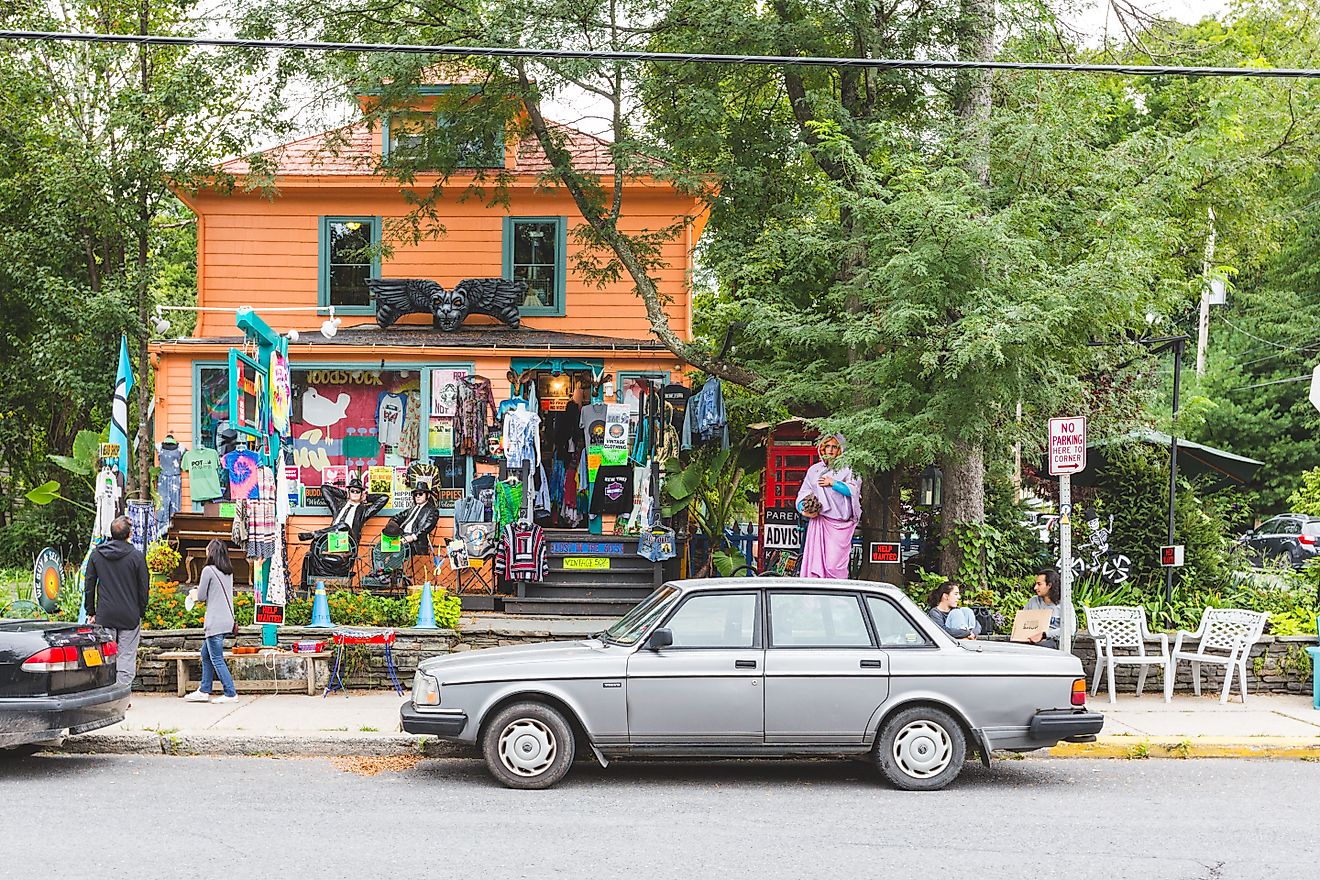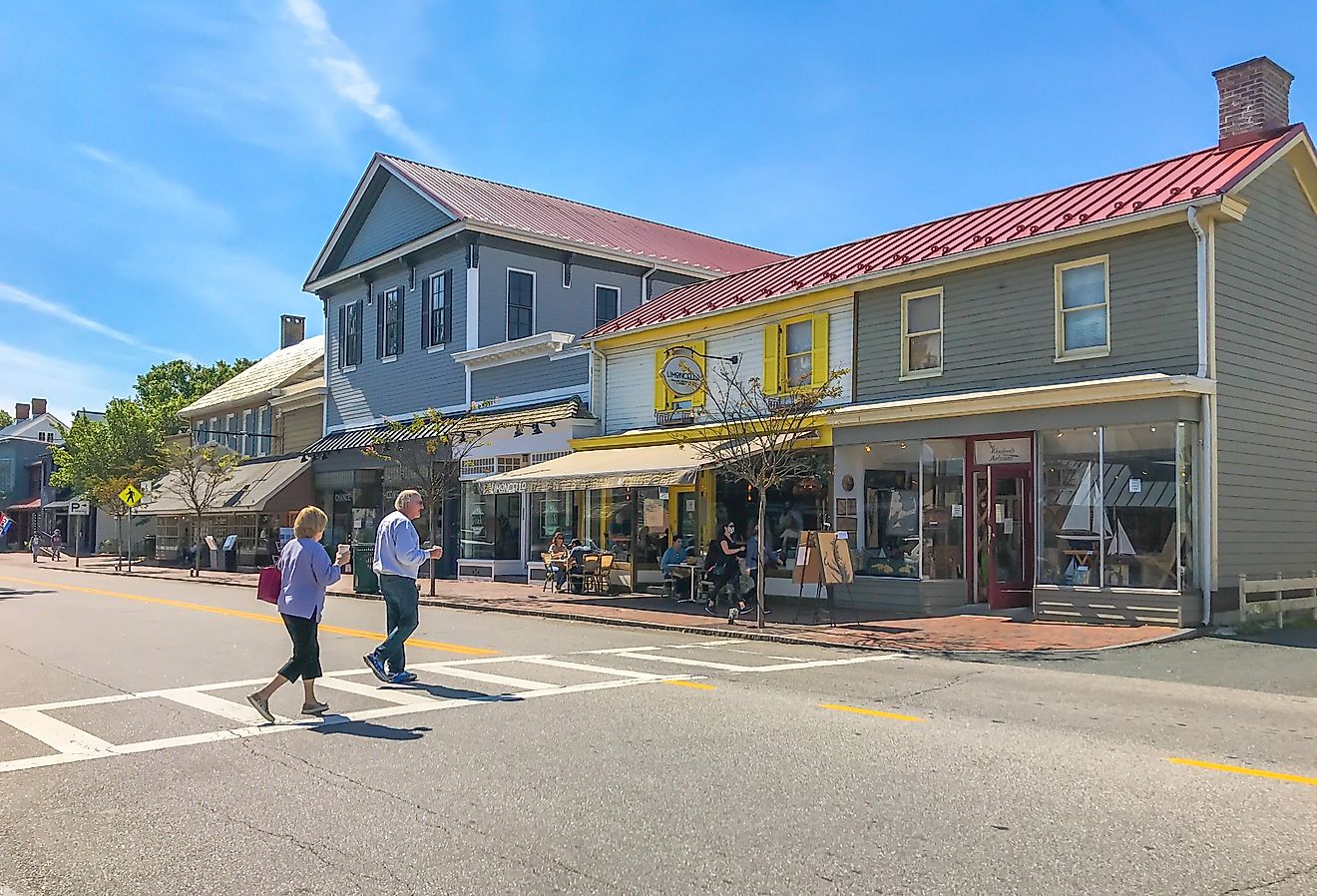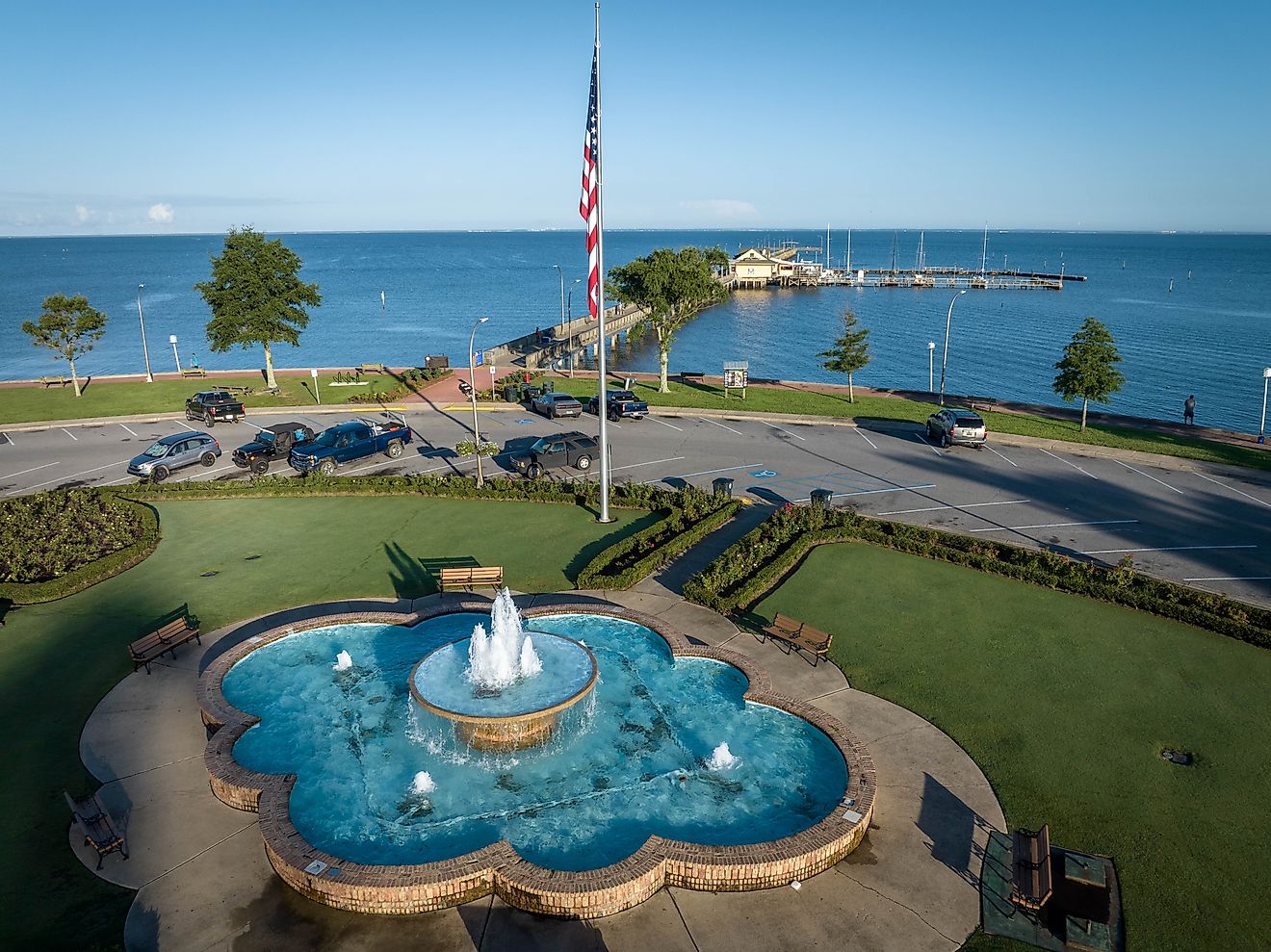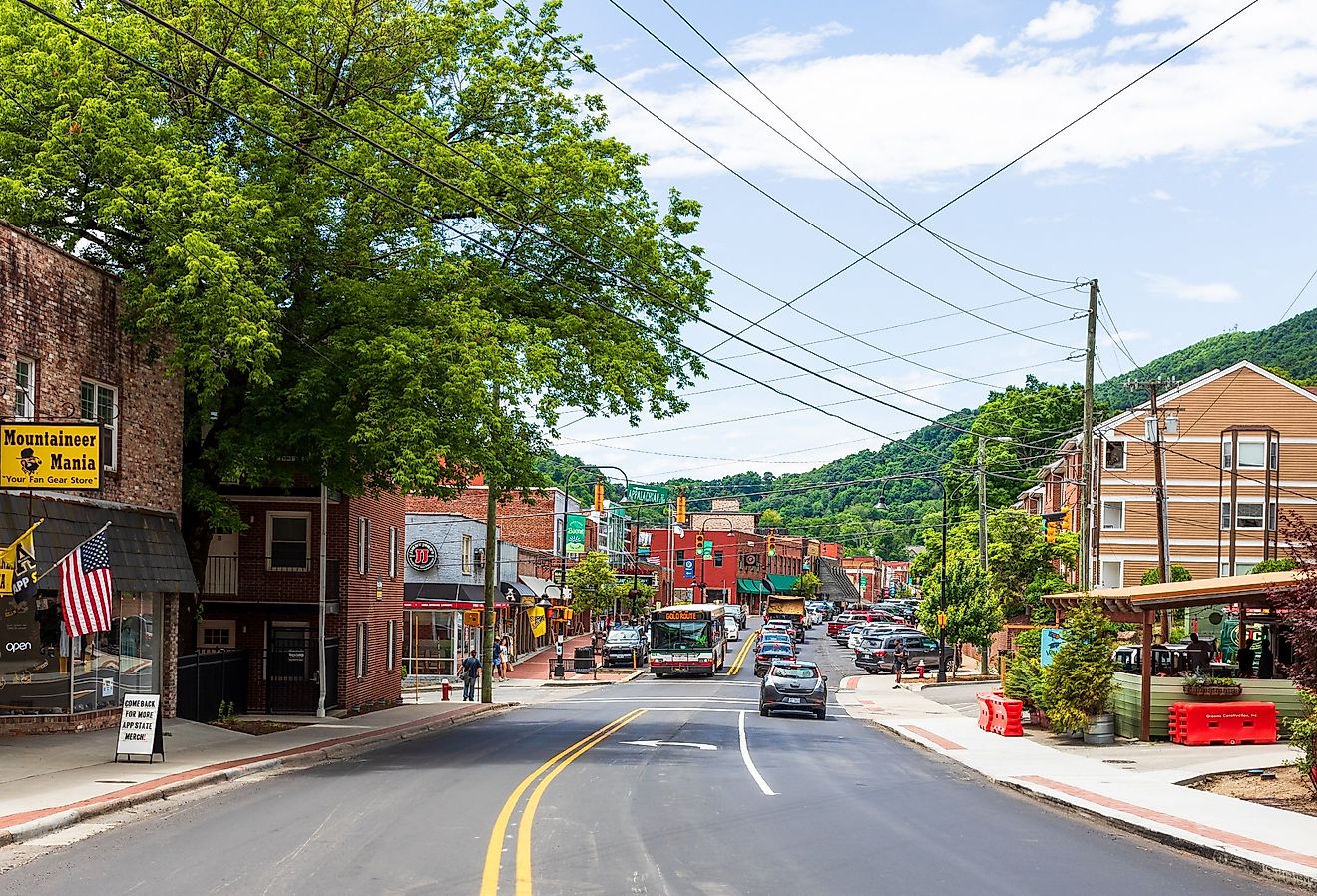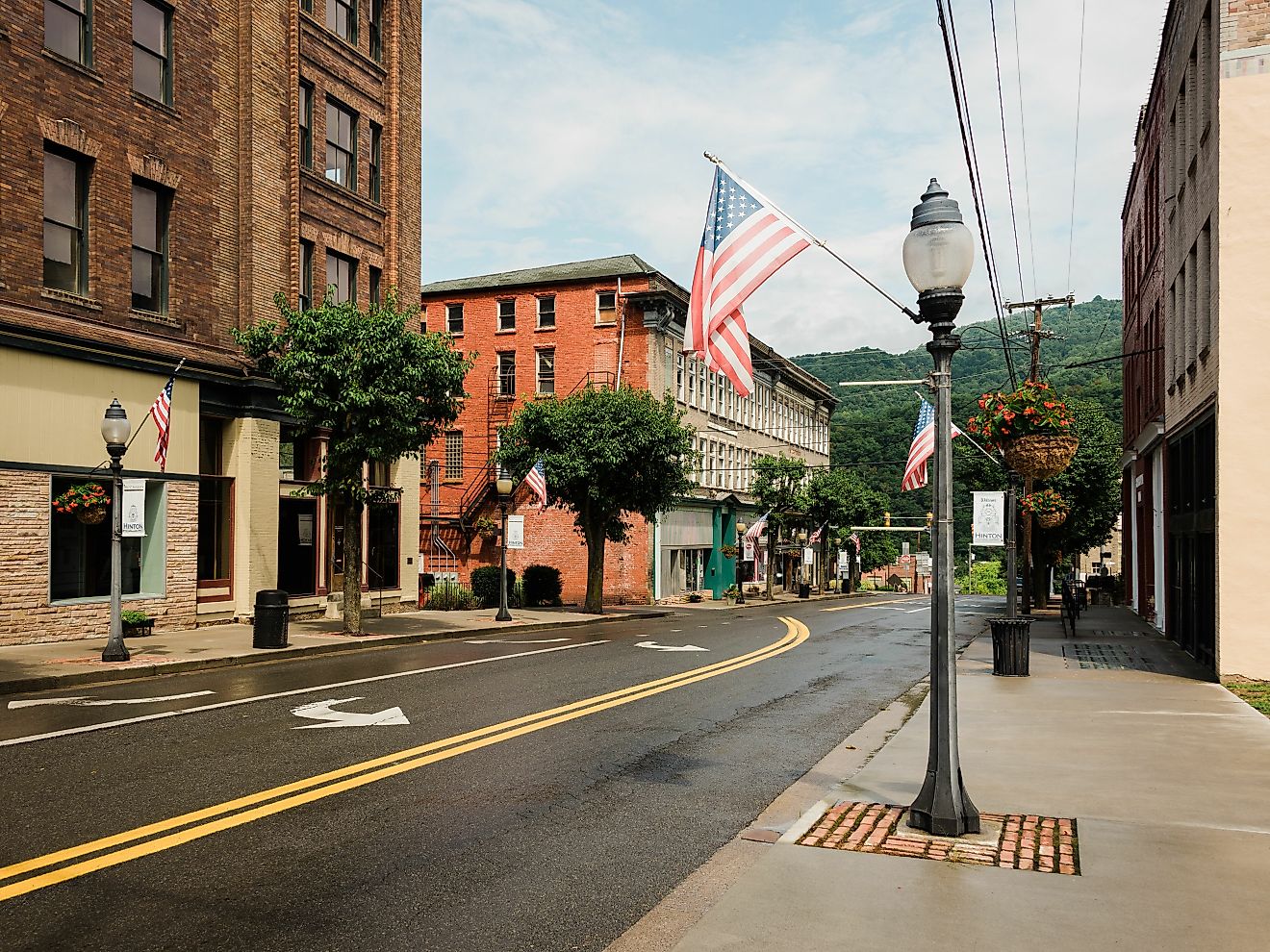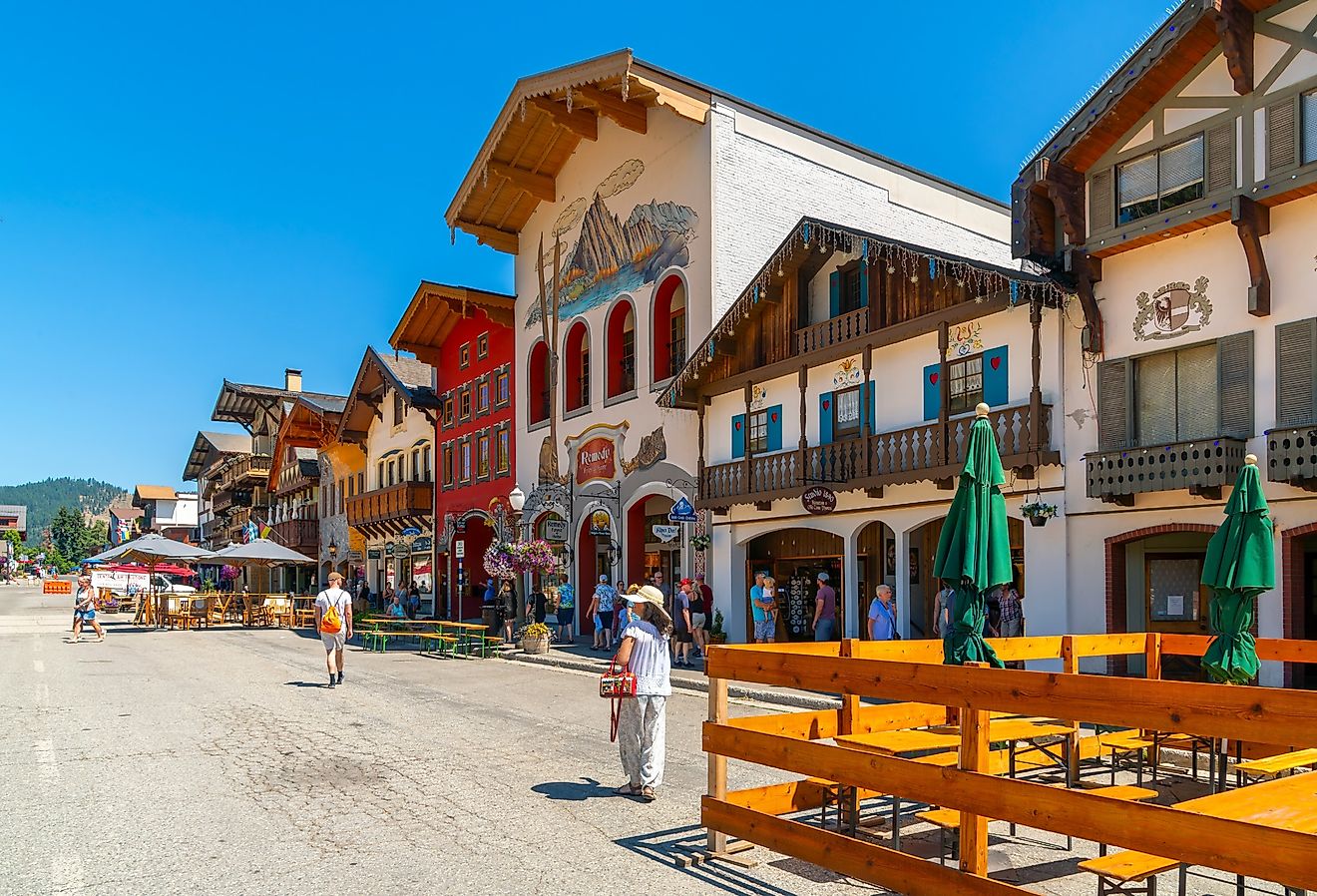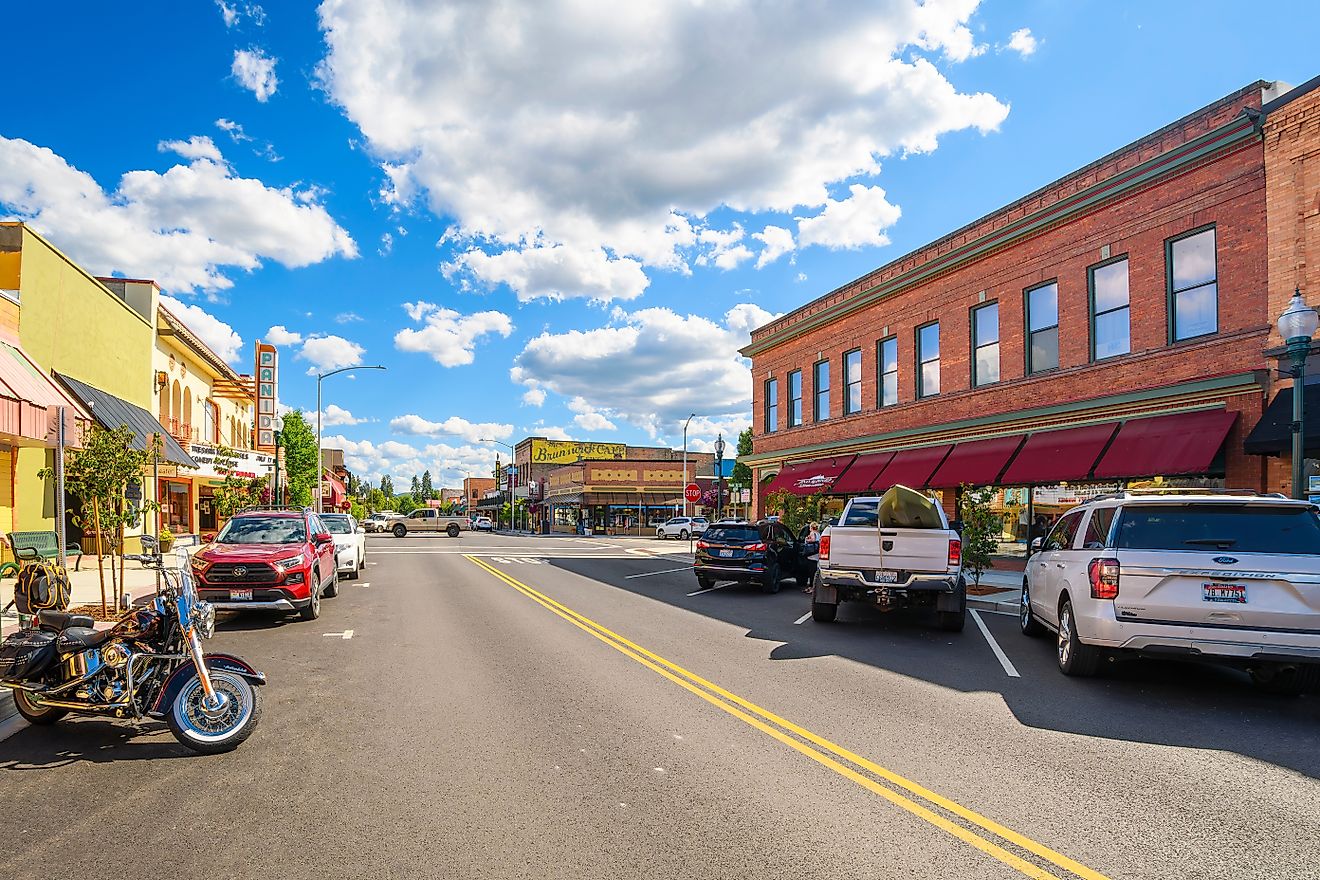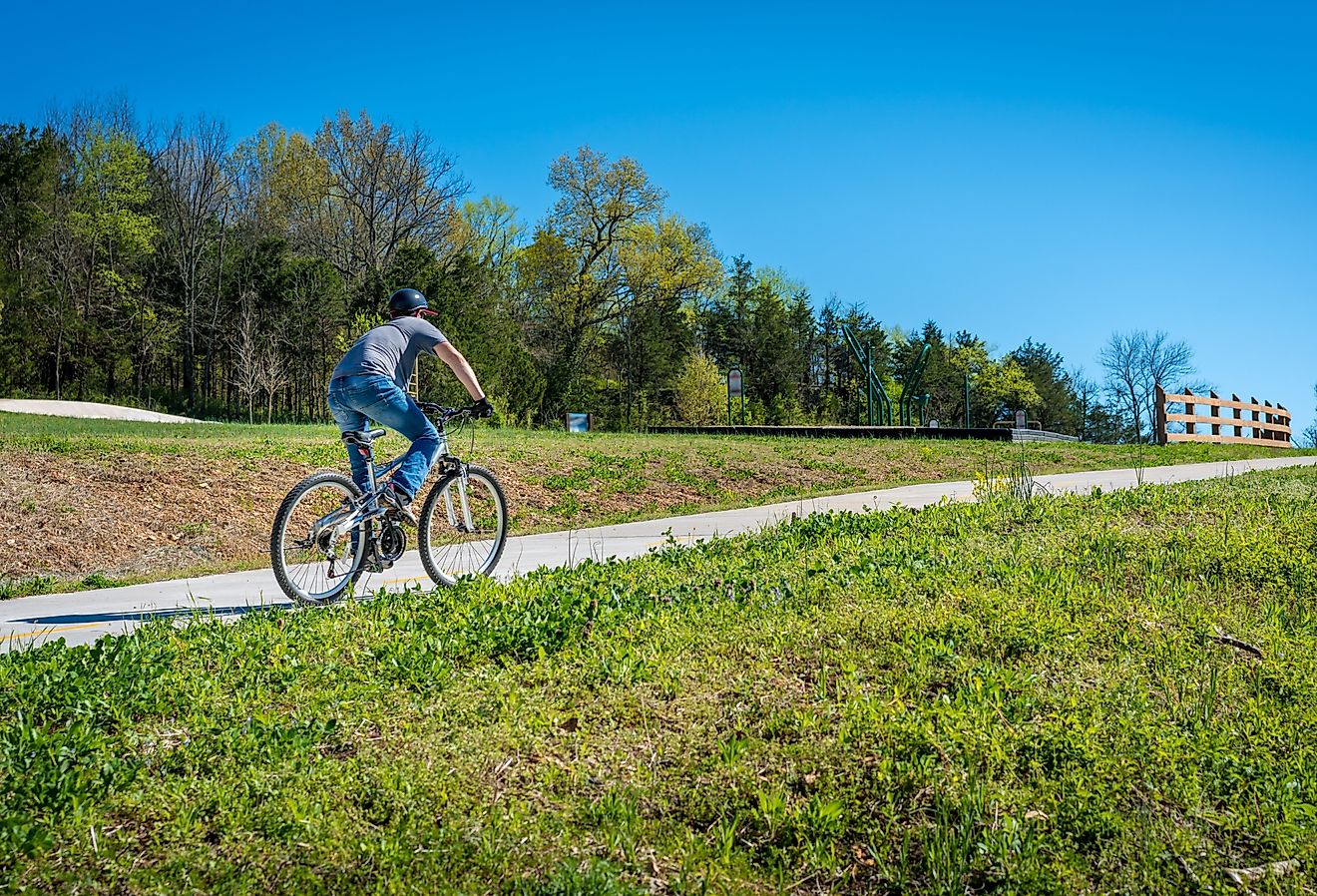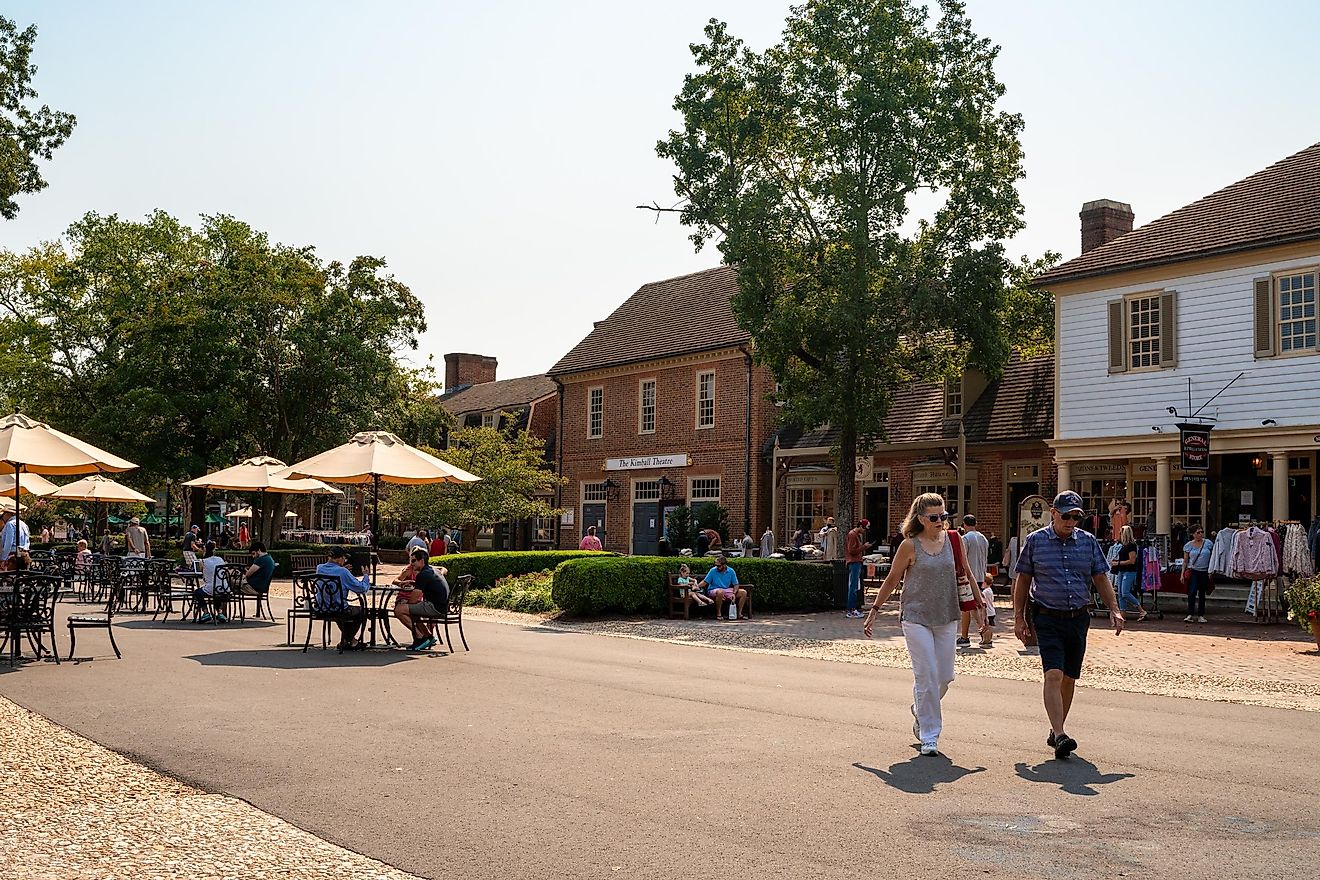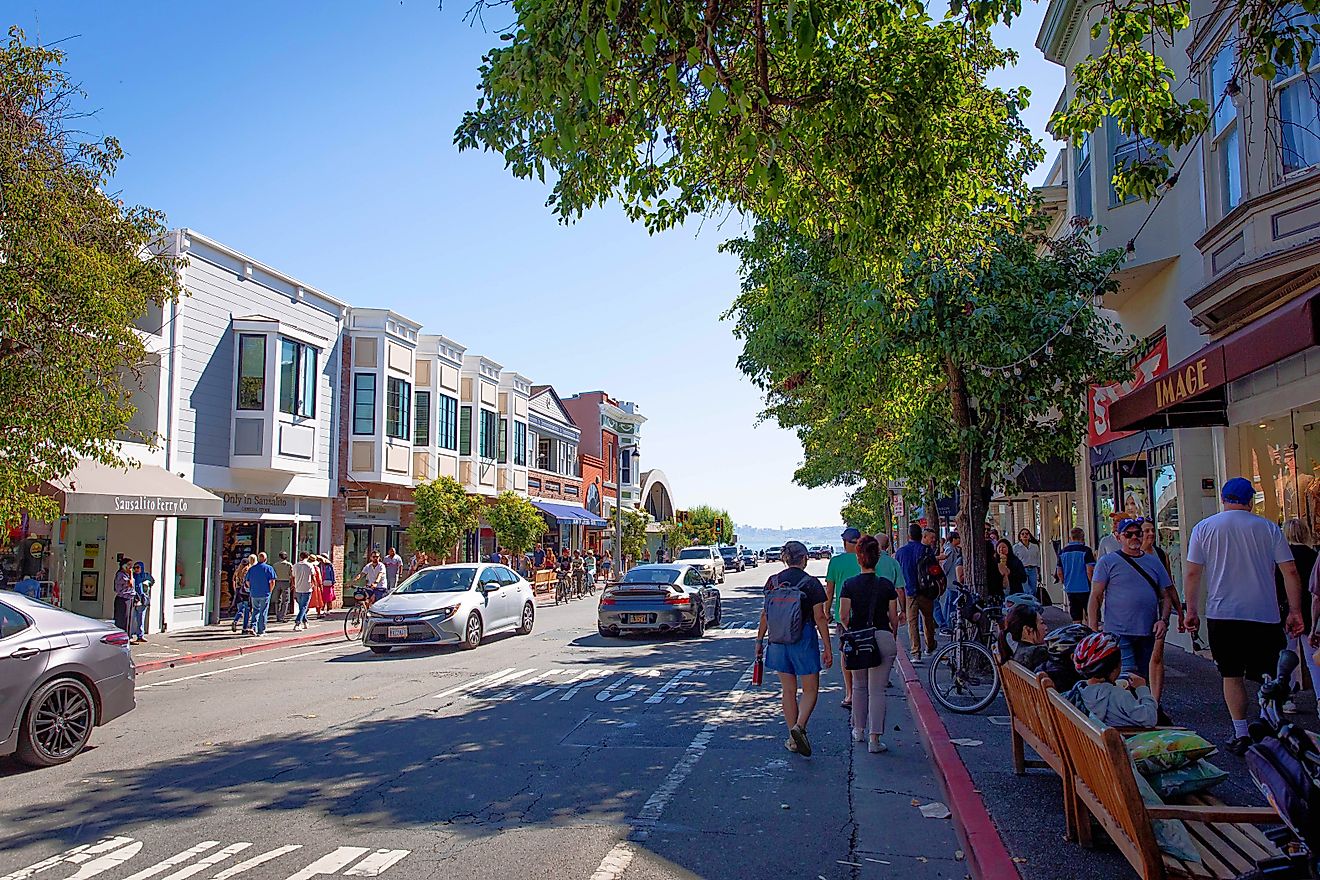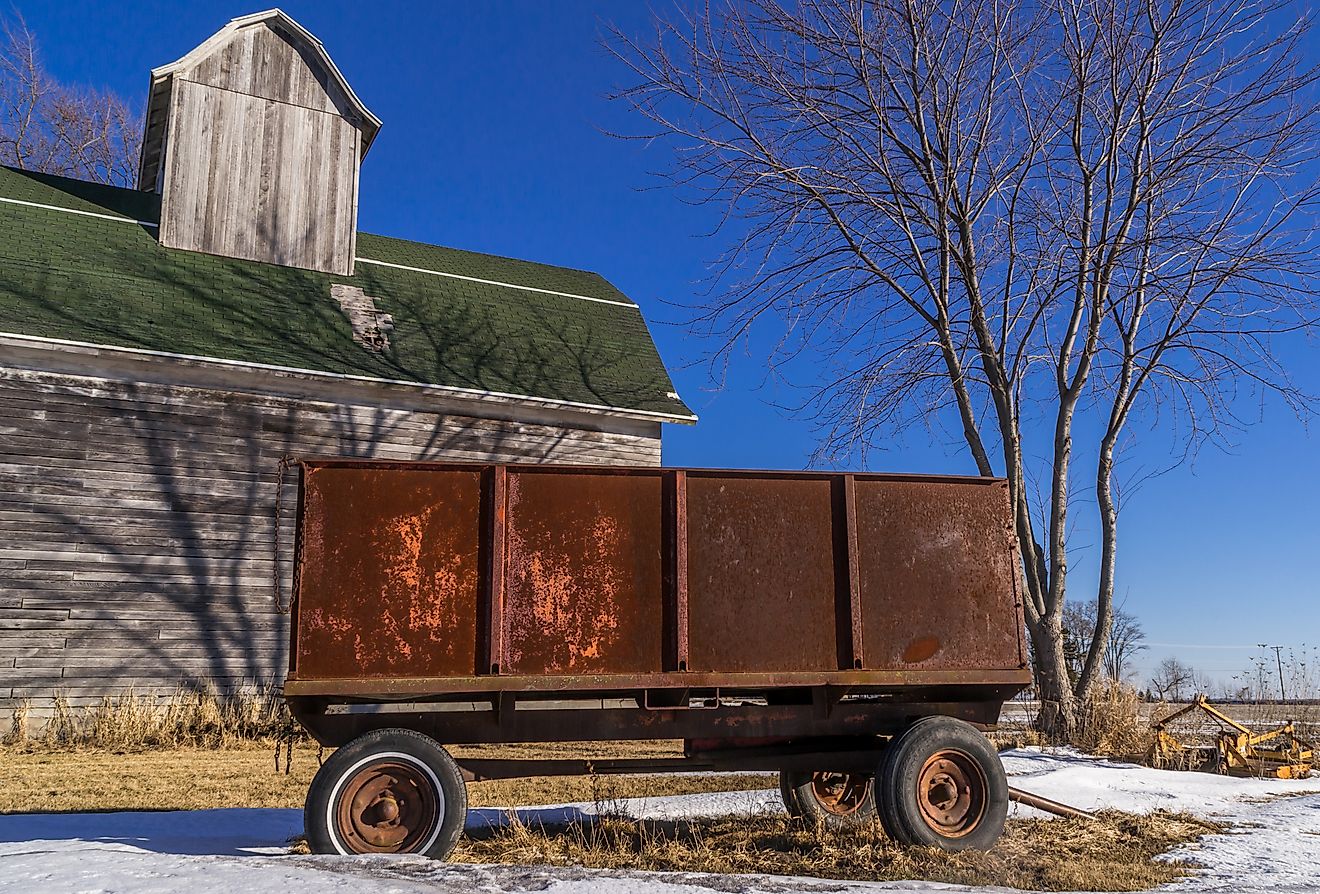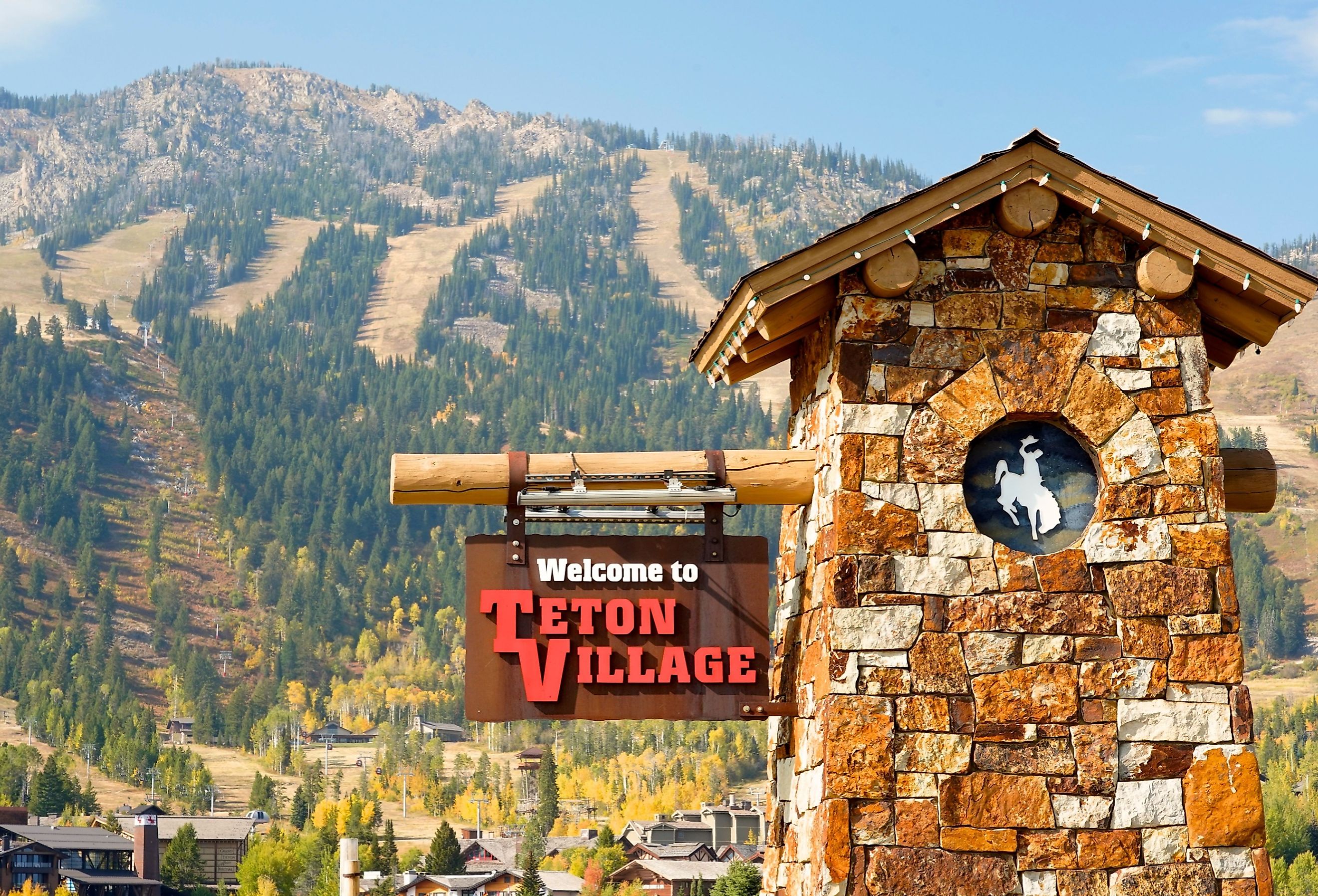
These 10 Towns in Wyoming Have Beautiful Architecture
The state of Wyoming is located in the mountains of the western United States where it borders six states—Nebraska, Montana, Idaho, Colorado, South Dakota, and Utah. It is the least populated state but it has a vast amount of land, totalling 97,914 square miles to see and explore.
The Equality State is known for its American Western flair and connection to the great outdoors, from natural hot springs to diverse wildlife. Yellowstone National Park and the Grand Teton National Park draw plenty of tourists to Wyoming yearly. Still, the Cowboy State is also home to other notable attractions, such as the beautiful architecture in its towns that tells stories of the state's rich history while delighting travelers.
Teton Village

Nature-fueled adventures await in Teton Village, a small town in Jackson Hole enveloped within the Tetons and the surrounding mountain ranges. This cozy community is a hotspot for skiers and snowboarders but attracts visitors year-round seeking nature-ridden experiences.
The architecture in this Wyoming town is as beautiful as its views. Stay at the Caldera House and enjoy this boutique hotel's chic (yet casual) vibes. The Caldera House is an eight-room, 70,000-square-foot property designed by award-winning studios Commune Design and Carney Logan Burke. The hotel includes heated balconies, large glass windows inviting natural light, and accents of blackened steel and weathered copper.
Architectural beauty also awaits a visit to the Grand Teton National Park, a favorite destination among backcountry campers, mountaineers, and travelers with a penchant for the outdoors. Peruse the historic Mormon Row District and check out the Moulton Barn or the Chambers Homestead. Do not forget to stop by the Chapel of Transfiguration—this beautiful log structure has been a place of worship since 1925 (and is also on the National Register of Historic Places).
Aladdin
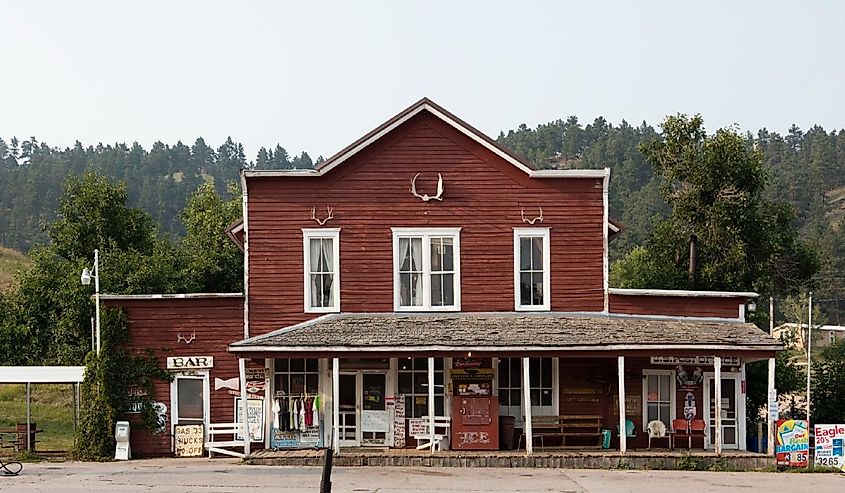
Fifteen buildings make up the small town of Aladdin and are remnants of a bygone era. Visit this small northeastern Wyoming community to learn more about coal mining in the area.
Aladdin’s General Store has remained up and running since its construction in 1896 (and over the years, has served as a saloon, post office, train depot, barbershop, freight station, and gas station). It sells a range of jewelry, clothing, souvenirs, and gifts. The Aladdin Tipple is another piece of local history, formerly used to load coal on the train that ran through Aladdin.
The first US national monument, the Devil’s National Monument, is within easy driving distance of Aladdin. The monument is a unique geological spanning 867 feet and is a sacred site for many Plains Indians and the Kiowa Tribe of the Black Hills Region.
Jackson
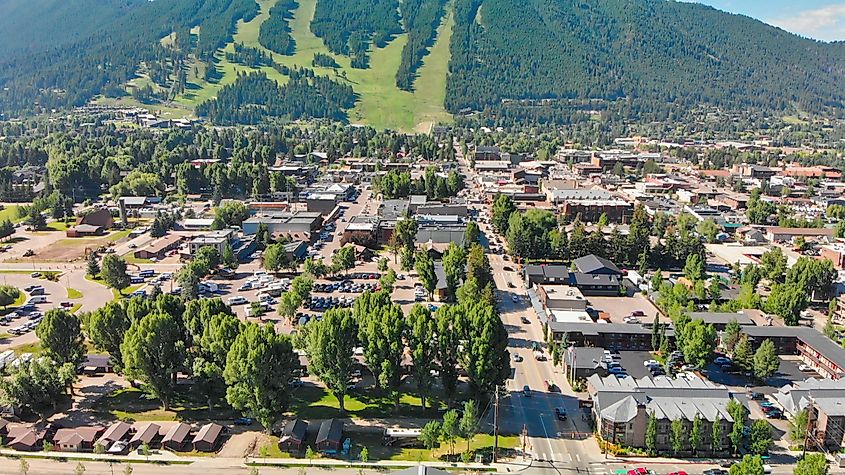
Visit Jackson in western Wyoming to enter the Gateway to the Grand Teton and Yellowstone National Parks. The town also boasts three major ski areas, proximity to the National Elk Refuge, and access points for the Bridger Teton National Forest.
Spend the day roaming through the National Museum of Wildlife Art, harnessing a remarkable architecture in Wyoming that artfully complements the natural landscape surrounding it. The 51,000-square-foot building blends seamlessly into Jackson’s native terrain, jutting out from the ground like a rock emerging from the earth. The museum hosts 14 galleries, the Sculpture Trail, a library, a shop, and a children’s discovery gallery.
Enjoy local theatre at the Jackson Hole Playhouse, the longest-running professional theatre in Wyoming. The building exudes Old West flair, from its ‘rowdy’ live theatre shows to its hand-crafted beverages at the Saddle Rock Saloon.
A vacation in Jackson is incomplete without visiting the National Elk Refuge. This refuge covers over 24,700 acres of grasslands, wetlands, and forests and functions as a haven for species like elk, bison, wolves, bald eagles, and more. Every year, visitors flock to the park to enjoy wildlife watching, hunting, fishing, and appreciating the expanse of the landscape.
Afton
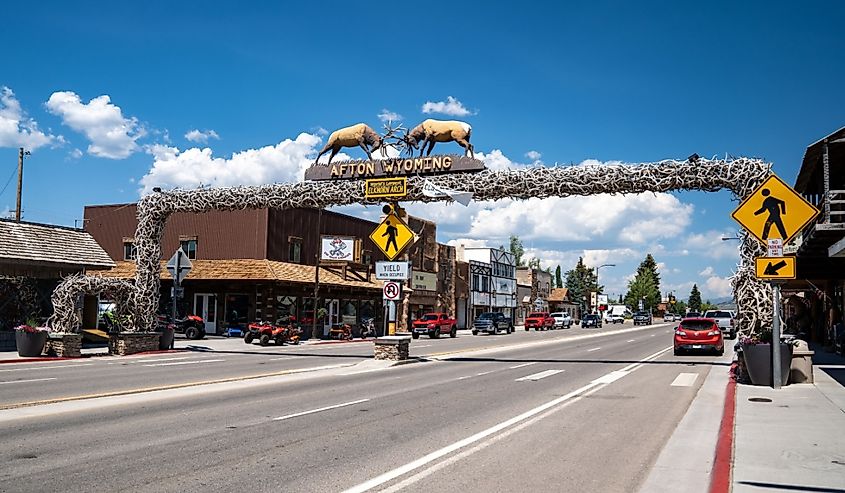
Celebrate the four seasons and the spirit of the American West at Afton! From shopping downtown to horseback riding, this small Wyoming town makes for a relatively peaceful vacation destination.
While in Afton, soak in the peaceful vibes and stay at Kodiak Mountain Resort, home to custom-made log cabins and rooms. This family-friendly stay oozes charm and is equipped with hand-crafted cabins and stunning details, all fit with modern amenities. Colter’s Lodge is another option for travelers who appreciate rustic chic vibes. Since 1939, this lodge-style hotel has made guests feel at home with its log-beamed lobby, Western-style rooms, and Antique Western Bar.
Besides its rustic, lodge-style accommodations, Afton is well-known for its proximity to the state’s natural wonders, including Afton’s Intermittent Spring, the terrain of the Teton-Bridger National Forest, and the waters of Cottonwood Lake.
Lovell

Enter the Gateway to the Bighorn Mountains in this Northern Wyoming town, east of Yellowstone National Park. Lovell may be a small community, but it has plenty of local shops, vibrant rose gardens, parks, and history.
A piece of historic Wyoming architecture remains at Lovell. The Hyart Theatre stands proud in downtown Lovell, shining as a rare example of an early 1950s theatre in Wyoming. Enter the historic theatre as the neon-lit artist’s palette greets you out front, adorned with walls made of structural tile and sided with brick, all encased with a flat roof covered in vinyl.
Spend some time exploring the Bighorn Canyon National Recreation Area's expanse, a playground for fellow hikers, campers, wildlife viewers, and nature enthusiasts. Plus, over 100,000 years of human history sit within this 120,000-acre property.
Remember to visit the Medicine Wheel within the Bighorn National Forest. The Medicine Wheel stands at an elevation of 9,640 feet and is an archeological property used by various tribes before Euro-American contact. Today, it remains a major Native American sacred complex.
Encampment
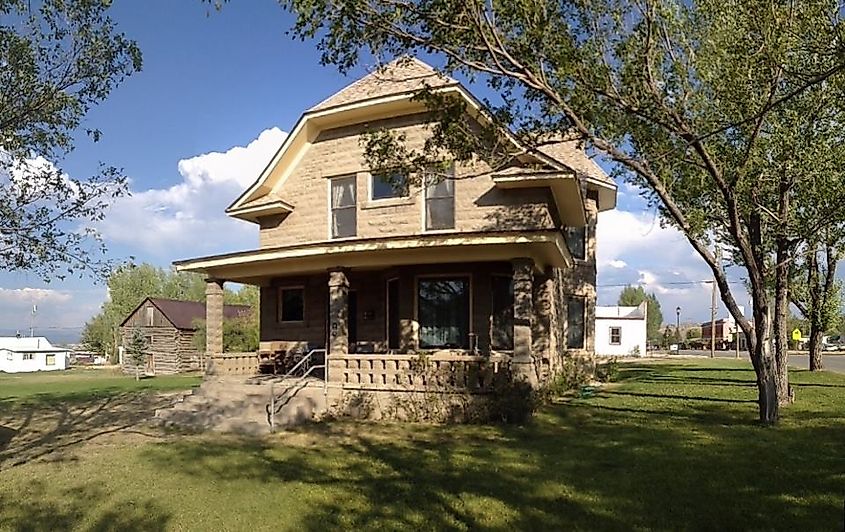
Encampment thrived as a hub for copper mining, timber, and agriculture, though many travelers flock to this small Wyoming town to heed nature’s call. At Encampment, visitors can enjoy some canoeing, rafting, kayaking, horseback riding, and more!
From Memorial Day to October, fill up the gas tank and drive on the Battle Highway along Wyoming’s Highway 70. This epic route spans over 45 miles stretching from Encampment to Baggs, highlighting the area's stunning backdrop of forest and mountain ranges. Alternatively, those who prefer to be up close and personal with nature can visit Medicine Bow National Forest near Encampment. This year-round nature escape is ideal for hiking, camping, and horseback riding. In the warmer months, frolic through the flowers while basking in the sun or visit the forest in the winter to enjoy quality skiing or snowboarding.
Encampment also houses some historic Wyoming architecture from yesteryear at the Grand Encampment Museum. Visit the museum’s collection of over a dozen historical buildings filled with artifacts from a bygone era. Learn local history at buildings like the Two-Story Outhouse, Palace Bakery and Ice Cream Parlor, or the Battle Miner Building (from the ghost town of Battle Lake).
Rawlins
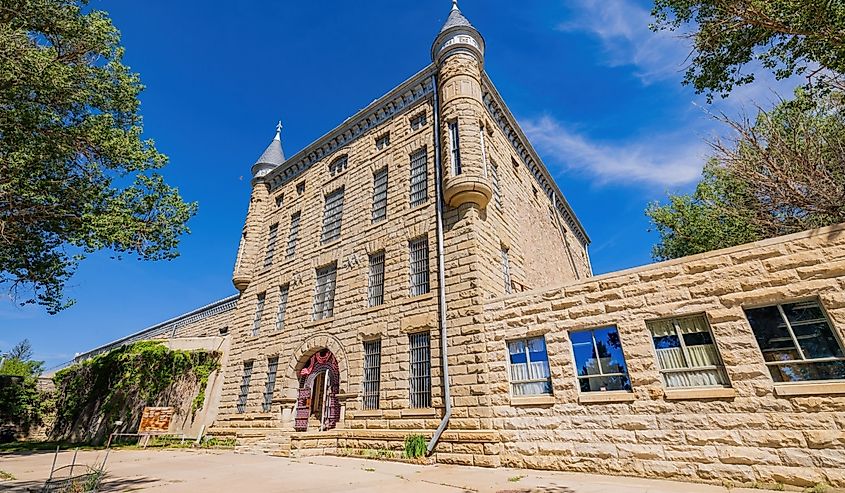
This South Central Wyoming town was an established stop on the Union Pacific Railroad and quickly transformed into a transportation hub for interior Wyoming and Northern Colorado. The small town of Rawlins also played a vital role in the state’s sheep and cattle industry.
Dive into Rawlins' colorful history and take a walking tour of its historic downtown district. The streets are lined with local businesses and landmarks to pique any curious traveler’s interest. During the tour, take note of vibrant murals and historic gems (including the early 20th-century Ferris Mansion on West Maple Street!). The tour also offers far-off views of the picturesque Medicine Bow-Routt National Forest.
Dive further into Rawlins's history at the Wyoming Frontier Prison. Wyoming’s first penitentiary housed over 13,500 people during its operation and was known for overcrowded cells, cruel punishment techniques, and different methods of execution. The “Old Pen” comes to life with its haunting tales of lawless criminals and people driven to crimes of passion.
Cody
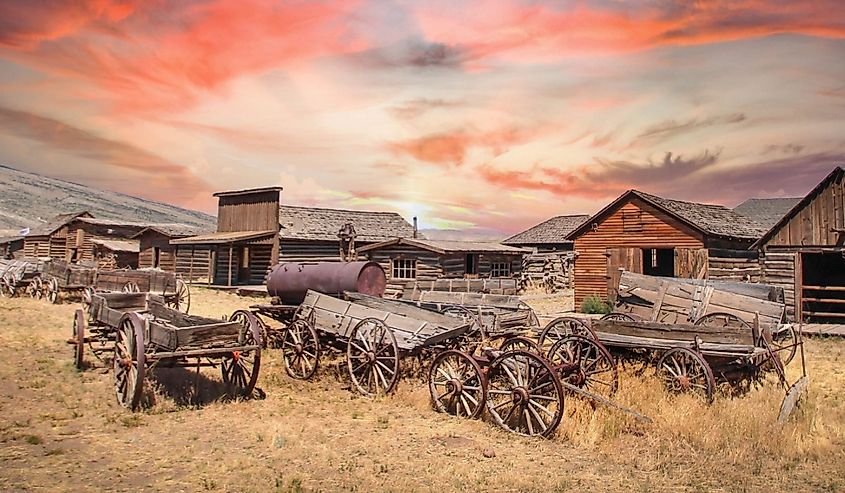
Cody was founded in 1896 by Colonel William Frederick Cody—famously known as Buffalo Bill—who was enamored with the development possibilities of the area due to its rich soils and proximity to Yellowstone National Park. Today, Cody thrives as Wyoming’s quintessential Old West Town.
Stop by the Buffalo Bill Center to learn about yesteryear at this five-museum attraction. The center is also an interesting piece of architecture in Wyoming and was artfully designed by Fentress Architects, from the immersive exhibits of the Draper National History Museum to the reflective space at the Whitney Western Art Museum. Do not forget to visit Old Trail Town to see remnants of the West. This attraction is filled with 1890s frontier buildings, cozy homesteader cabins, and other buildings from the time.
A visit to the world-famous Yellowstone National Park is a must-visit when in Cody. The town is only about 50 miles away from the East Entrance to the park. The park is massive, spanning 2.2 million acres and home to a melange of unique ecosystems, active geysers, and geological wonders (including the Grand Canyon of the Yellowstone River)!
Laramie
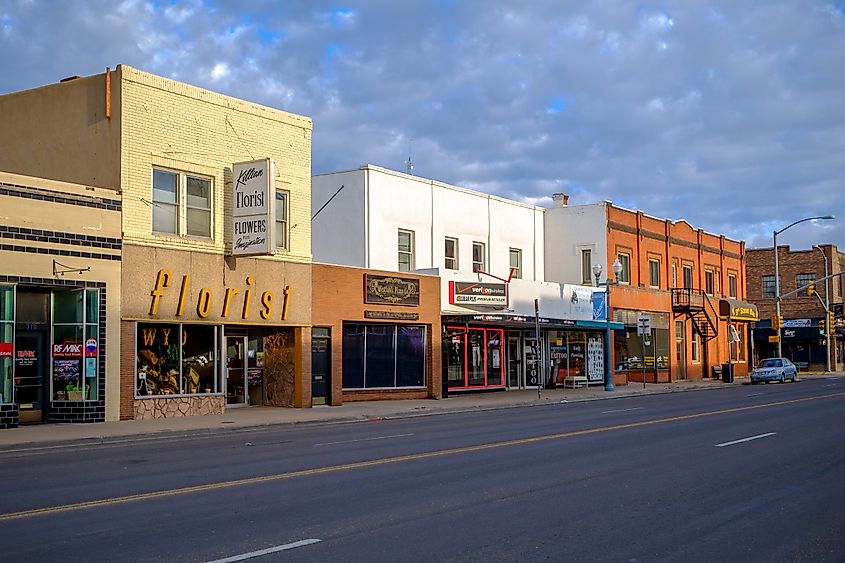
Laramie is a Wyoming college town famous for its rich Western roots and outdoor recreation opportunities. It is ideal for family-friendly travelers.
Spend a day at the University of Wyoming Art Museum to peruse world-class art from local and international artists, featuring works of various subjects, including the American West. The Wyoming Territorial Prison State Historic Site is another popular attraction in Laramie, educating visitors about Wyoming’s first State Penitentiary (and later functioned as an agricultural experiment station for the University of Wyoming).
Visit the Laramie Plains Museum at the Historic Ivinson Mansion to appreciate the beautiful architecture in Wyoming. This elegant mansion was completed in 1892 and includes 33 rooms and three floors! Explore the digs of this Victorian-style residence while learning its history as a residence and former boarding school.
Continue your journey to appreciating beautiful Wyoming architecture with a visit to the Ames Monument, built by the Pacific Railroad Company in 1882. Stand in front of their grand 60-foot-high granite pyramid, which sits at the highest elevation of the original transcontinental route.
Sheridan

Sheridan is a Wyoming jewel found halfway between Yellowstone National Park and Mount Rushmore. Sheridan's admirable traits are Western history, wide open spaces, and a dramatic backdrop of the Bighorn Mountains. This Wyoming town is also home to beautiful architecture, many of which are historic.
Stroll through downtown Sheridan and discover 46 buildings included on the National Register of Historic Places. Browse and stop by local businesses like the very popular King’s Saddlery—famous for its vast collection of Western memorabilia—or the Art Deco digs of the historic WYO Theater (with roots dating back to 1923).
Travelers with a knack for architecture can enjoy an afternoon touring the Trail End, a 13,748-square-foot mansion that now functions as a historic house museum, highlighting daily life between 1913 and 1933. The Sheridan Inn stands as another architectural highlight and a National Historic Landmark in Sheridan. This revitalized inn was built in 1893 and offers 22 rooms artfully decorated with Western-style art, furnishings, and finishes.
From its national parks to its Western flair, plenty of travelers are drawn to the beauty of The Equality State. Simultaneously, there are plenty of historic buildings and beautiful architecture in Wyoming that curious visitors can appreciate. Whether heading out on a day trip or seeking a long weekend away, the aforementioned Wyoming towns truly offer anything one could desire when visiting!
